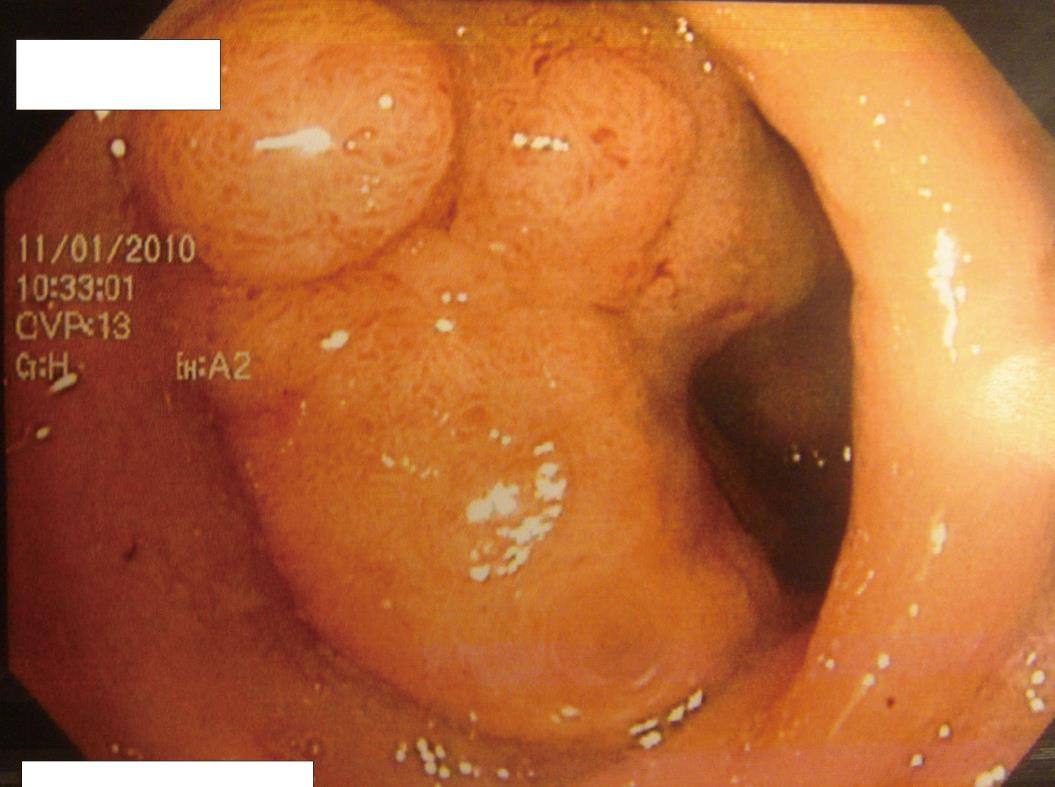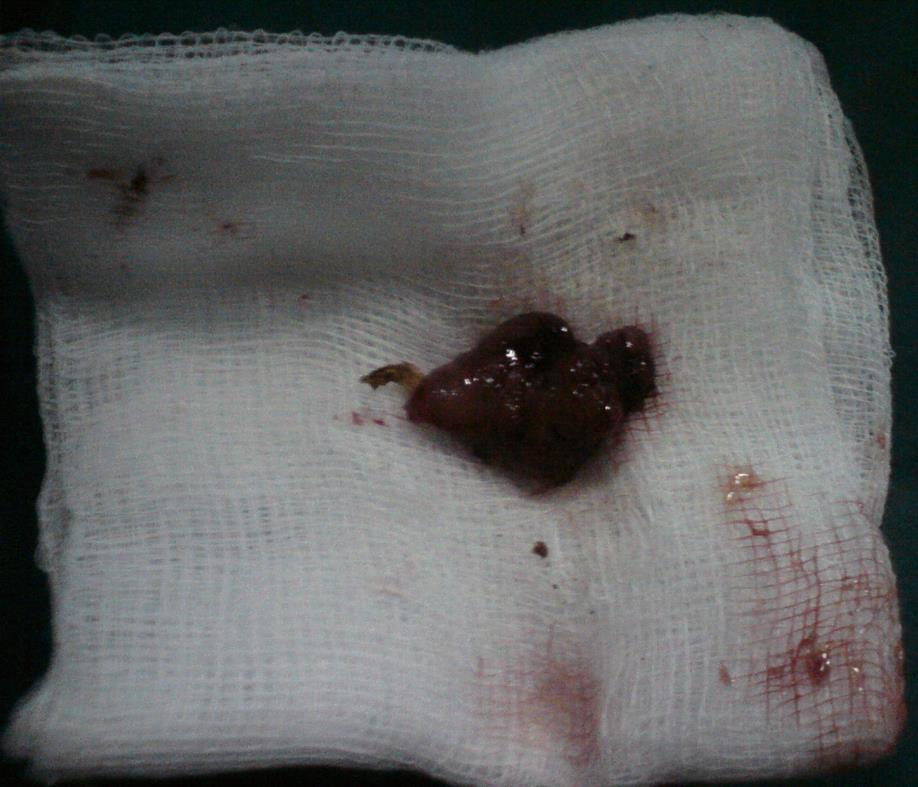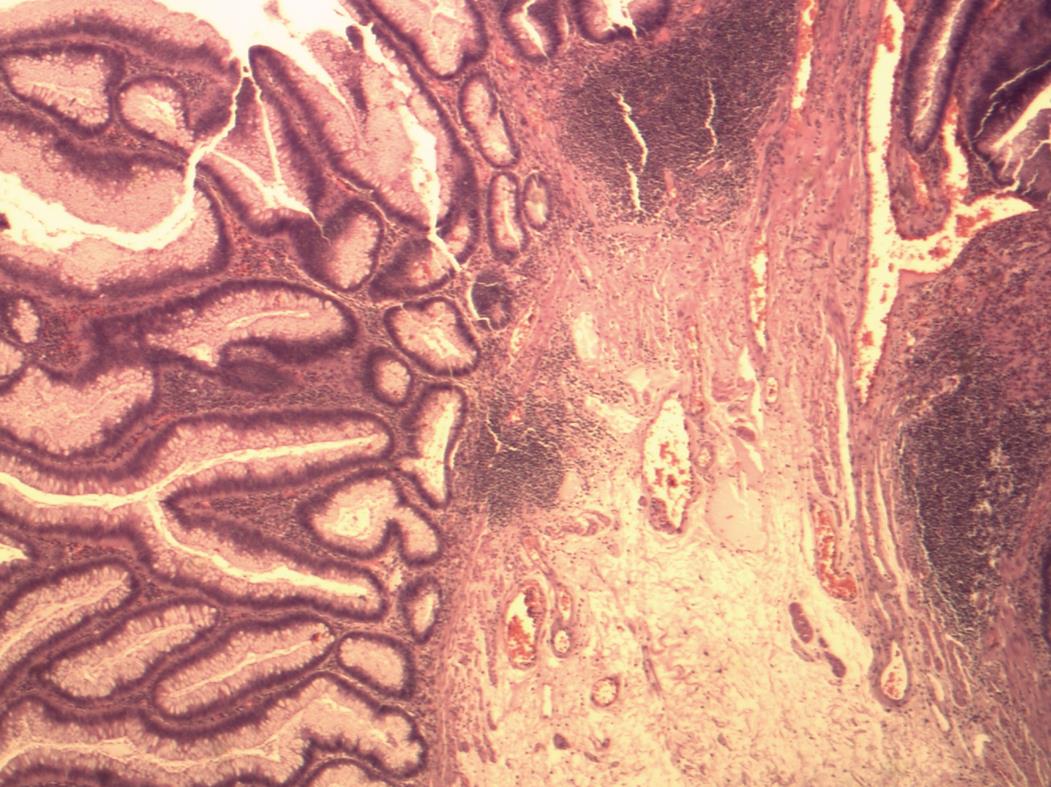Published online Apr 27, 2011. doi: 10.4240/wjgs.v3.i4.56
Revised: March 16, 2011
Accepted: March 23, 2011
Published online: April 27, 2011
Transanal excision of rectal polyps with laparoscopic instrumentation and a single incision laparoscopic port is a novel technique that uses technology originally developed for abdominal procedures from the natural orifice of the rectum. Transanal endoscopic microsurgery (TEM) is a well established surgical approach for certain benign or early malignant lesions of the rectum, under specific indications. Our technique is a hybrid technique of transanal surgery, a reasonable method for polyp resection without the need of the sophisticated and expensive instrumentation of TEM which can be applied whenever endoscopic or conventional transanal surgical removal is not feasible.
- Citation: Dardamanis D, Theodorou D, Theodoropoulos G, Larentzakis A, Natoudi M, Doulami G, Zoumpouli C, Markogiannakis H, Katsaragakis S, Zografos GC. Transanal polypectomy using single incision laparoscopic instruments. World J Gastrointest Surg 2011; 3(4): 56-58
- URL: https://www.wjgnet.com/1948-9366/full/v3/i4/56.htm
- DOI: https://dx.doi.org/10.4240/wjgs.v3.i4.56
Rectal polyps are common lesions that always require further investigation. Local excision and histological evaluation is essential since polyps can hide precancerous conditions like adenomas or invasive carcinoma. Smaller polyps can be easily excised by endoscopic techniques, while larger ones may be removed surgically. Endoscopic polyp removal is technically demanding and not always feasible, either due to size or because of difficult location. Conventional transanal surgical approaches may be successful in peripherally situated polyps whereas for more centrally located lesions transanal endoscopic microsurgery (TEM) allows full thickness removal, as well as suturing of the defect. TEM has recently been applied with excellent results in sessile rectal polyps and low-risk tumours of the middle and upper rectum[1-5].
However, TEM instrumentation is not readily available in every operating room, and the cost and the technical difficulties may discourage surgeons from application of TEM even when this is indicated. TEM proctoscope insertion has also been blamed for rectal incontinence and rectal sphincter dysfunction[6]. Meanwhile, laparoscopy techniques are becoming less and less invasive, with the commercial introduction and clinical use of smaller and fewer ports, making even single incision laparoscopic operations possible in some cases[7-10]. Here, we present a case where the extraction of a rectal polyp was achieved with laparoscopic instrumentation through a single incision laparoscopic surgery port.
The patient was a 66-year-old woman with a polyp of 4 cm at maximum diameter detected by colonoscopy, situated 9 cm from the anal verge on the postero-lateral wall (Figure 1). Endoscopic removal was not attempted due to the size of the polyp and its sessile macroscopic configuration. Biopsies taken endoscopically, revealed a tubullo-villous adenoma with high grade dysplasia. Transanal endoscopic ultrasound did not show any submucosal invasion and the patient was referred for surgical excision. Special instrumentation for TEM was not available and transanal extraction using conventional retractors and instruments was anticipated to be extensive and technically demanding, if at all feasible, due to the size of the polyp and its distance from the anal verge. After initiation of general anaesthesia, the patient was positioned in the lithotomy position, with the surgeon and assistant between her legs and the monitor on the left side of the operating table. A single incision laparoscopic port (SILS™ Port, Covidien, Norwalk, CT, USA) was lubricated and inserted in the rectum up to the anorectal ring (Figure 2). No digital rectal dilation was needed. Pneumorectum was established at a pressure of 15-18 mmHg CO2 with continuous insufflation. Three 5-mm laparoscopic trocars (Dexide™ threaded trocars, Covidien, Norwalk, CT, USA) and a 5 mm, 300 laparoscopic camera were inserted, an articulated grasper (Roticulator™ Endograsp; Autosuture, Norwalk, CT, USA) to handle the polyp and a vessel sealing and cutting instrument (LigaSure™ V, Valleylab, Boulder, CO, USA) were used.
The polyp was handled with the grasper and resected in the submucosal plane with four LigaSure™ applications. There was no air leak, haemorrhage, sign of perforation or other perioperative complications and the specimen was extracted from the anus in one-piece (Figure 3). Total operative time was 45 min. Postoperatively, the patient had no complaints of bloating and did not require any analgesics or other medication. She was discharged on the 2nd postoperative day on full liquid diet, following a normal defecation. Histology demonstrated a high grade dysplasia tubullo-villous adenoma. The removal was optimal with clear resection margins, 1.5-2.0 mm on the lateral margin and 2 mm on the deeper one (Figure 4). Clinical follow up and surveillance rectosigmoidoscopy after 6 mo, revealed no sign of negative pathology.
The use of a SILS™ Port for excision of benign polyps of the rectum is feasible and provides a valuable alternative to other transanal techniques. Possible advantages may be the smaller diameter of the port ring (30 mm) and its pliability in contrast to the larger diameter (40 mm), stiff proctoscope used in the TEM approach. No air leaks were apparent in our case. Articulating instruments applied in SILS abdominal operations seem to be useful in accomplishing transanal excisions, while the use of a 5 mm laparoscope offers the advantage of further working space in the limited intrarectal area. The TEM method has been criticized for not being easily reproduced by most surgeons. Significant costs are associated with the purchase of TEM instrumentation and with training of surgeons and staff, especially considering the relative small number of cases that is indicated. Because of the proctoscope’s size and rigidity, rectal dilatation is often required and anal sphincter dysfunctions are not rare. The technique we have described could become an alternative method for rectal lesions, sharing the same indications with TEM but having a number of advantages.
Laparoscopic instruments along with single incision technology can be safely applied transanally, for certain indications. Long term outcomes, cost effectiveness and definite indications should be cautiously evaluated in the future.
Peer reviewer: Reinhart T Grundmann, Professor, Wissenschaftlich Medizinischer Direktor, Kreiskliniken Altötting-Burghausen, Krankenhausstr 1, D- 84489 Burghausen, Germany
S- Editor Wang JL L- Editor Hughes D E- Editor Zheng XM
| 1. | Buess G, Hutterer F, Theiss J, Böbel M, Isselhard W, Pichlmaier H. [A system for a transanal endoscopic rectum operation]. Chirurg. 1984;55:677-680. |
| 2. | Whitehouse PA, Tilney HS, Armitage JN, Simson JN. Transanal endoscopic microsurgery: risk factors for local recurrence of benign rectal adenomas. Colorectal Dis. 2006;8:795-799. |
| 3. | Guerrieri M, Baldarelli M, de Sanctis A, Campagnacci R, Rimini M, Lezoche E. Treatment of rectal adenomas by transanal endoscopic microsurgery: 15 years' experience. Surg Endosc. 2010;24:445-449. |
| 4. | Chiavellati L, D'Elia G, Zerilli M, Tremiterra S, Stipa S. Management of large malignant rectal polyps with transanal endoscopic microsurgery. Is there anything better for the patient? Eur J Surg Oncol. 1994;20:658-666. |
| 5. | Papagrigoriadis S. Transanal endoscopic micro-surgery (TEMS) for the management of large or sessile rectal adenomas: a review of the technique and indications. Int Semin Surg Oncol. 2006;3:13. |
| 6. | Dafnis G, Påhlman L, Raab Y, Gustafsson UM, Graf W. Transanal endoscopic microsurgery: clinical and functional results. Colorectal Dis. 2004;6:336-342. |
| 7. | Pelosi MA, Pelosi MA 3rd. Laparoscopic supracervical hysterectomy using a single-umbilical puncture (mini-laparoscopy). J Reprod Med. 1992;37:777-784. |
| 8. | Pelosi MA, Pelosi MA 3rd. Laparoscopic appendectomy using a single umbilical puncture (minilaparoscopy). J Reprod Med. 1992;37:588-594. |
| 9. | Navarra G, Pozza E, Occhionorelli S, Carcoforo P, Donini I. One-wound laparoscopic cholecystectomy. Br J Surg. 1997;84:695. |
| 10. | Romanelli JR, Earle DB. Single-port laparoscopic surgery: an overview. Surg Endosc. 2009;23:1419-1427. |












